Heb je hulp of advies nodig?+44 (0)1782 454499
PRODUCTEN GEBRUIKT IN DIT PROJECT
Hoewel dit niet per se een uitputtende lijst is, werden de volgende gereedschappen en materialen, geleverd door Easy Composites, in dit project gebruikt.
De hoeveelheid die hieronder wordt weergegeven, is de geschatte hoeveelheid die in het project wordt gebruikt, afgerond naar de dichtstbijzijnde beschikbare kitgrootte of hoeveelheid.
VERSTERKINGEN
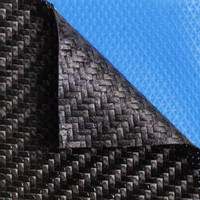
GEREEDSCHAP & UITRUSTING
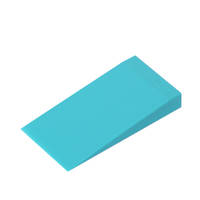
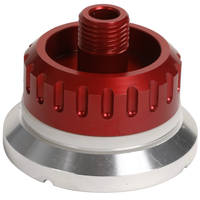
VERBRUIKSARTIKELEN VOOR VACUÜMZAKKEN
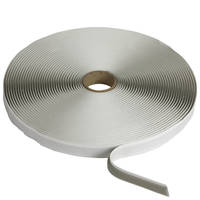
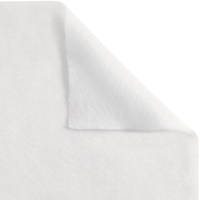
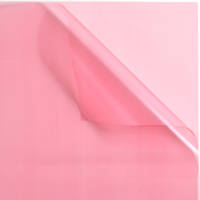
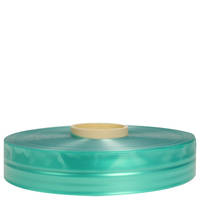
VIDEO HANDLEIDING
Lamineren en Verpakken van een Koolstofvezelbuis met een Gedeelde Mal
In deze videotutorial bekijken we in detail hoe je buisvormige composietonderdelen kunt lamineren en vervolgens vacuüm zuigen met behulp van een split-mould proces met een interne vacuümzak.
Dit proces kan worden gebruikt om niet-rechte buisvormen te produceren zoals koolstofvezel sturen, kajakpeddels en inductiebuizen. Het kan ook worden gebruikt voor zeer complexe buisstructuren zoals fietsframes en draagarmen van koolstofvezel. In feite is deze video bedoeld om een gedetailleerdere blik te werpen op de lamineermethode en de vacuümzakprincipes die worden gebruikt in onze instructievideo over het maken van een fietsframe van koolstofvezel.
In situaties waarin alleen een rechte buisvorm nodig is, is de productiemethode met opgerolde buizen vaak geschikter, of in commerciële productieprocessen zoals pultrusie of pulsen kunnen ook processen worden gebruikt. Geen van deze processen kan echter worden gebruikt voor gebogen/gebogen buizen of complexe buisstructuren.
ACHTERGROND
Hoe zit het met interne blazen?
Deze methode is een alternatief voor de methode met een inwendige drukblaas die vaak wordt gebruikt bij de productie van fietsframes. Hiervoor zijn veel zwaardere mallen nodig, die meestal worden gemaakt van massieve aluminium knuppels die bestand moeten zijn tegen de vervorming die wordt veroorzaakt door de onevenwichtige druk van de inwendige blaas.
Door de druk gelijkmatig op de binnen- en buitenkant van de matrijs uit te oefenen, veroorzaakt deze methode van inwendig vacuümzakken weinig of geen vervorming van de matrijs, waardoor veel lichtere - en goedkopere - matrijzen kunnen worden gebruikt.
Hoe zit het met uitharding in een autoclaaf?
Hoewel we in deze tutorial het proces demonstreren waarbij alleen vacuümdruk wordt gebruikt en het onderdeel vervolgens wordt uitgehard in een conventionele oven (bekend als out-of-autoclave prepreg), kan - en wordt - exact hetzelfde proces worden gebruikt voor het onder hoge druk uitharden van buis- en framestructuren in een autoclaaf. Voor uitharding in een autoclaaf hoef je niets te veranderen aan de materialen, de lay-up of het vacuümverpakkingsproces dat in deze handleiding wordt getoond.
Net als bij de vacuüm uitharding buiten de autoclaaf, creëert het uitharden in de autoclaaf met dezelfde interne vacuümzakconfiguratie ook gelijke druk aan beide zijden van de mal, waardoor deze lichtere composietgereedschappen gebruikt kunnen worden.
Moet het prepreg zijn?
Complexe koolstofvezel buis- of frameframes worden bijna uitsluitend gemaakt met behulp van het prepreg spuitgietproces. Dit heeft vooral te maken met de praktische aspecten van het nauwkeurig snijden, hanteren en positioneren van de wapening in de gedeelde mal, het manipuleren van de wapening wanneer de mal gesloten wordt en het werken rond de wapening om de verbruiksmaterialen voor het vacuümzakken te positioneren. Al deze processen zouden moeilijk of bijna onmogelijk zijn met een traditionele natte oplegmethode of alternatieve vacuümgietprocessen zoals harsinfusie van droge stof.
In deze video gebruiken we de XPREG XC110 uitautoclaaf koolstofvezel prepreg, die in de oven is uitgehard met behulp van een trapsgewijs temperatuurprofiel tot 120C; videotutorial over het maken van prepreg koolstofvezelonderdelen uitautoclaaf hier.
Geschikte gereedschaps-/malmaterialen
Omdat in deze tutorial prepreg koolstof weefsel wordt gebruikt, moet het onderdeel worden uitgehard in een oven bij verhoogde temperatuur. Het is daarom essentieel dat het materiaal waarvan de mal is gemaakt een voldoende hoge gebruikstemperatuur heeft. De mal die in deze handleiding wordt gebruikt, is gemaakt met ons XT135 prepreg-systeem voor koolstofvezelgereedschappen dat buiten de autoclaaf wordt gebruikt; hier is een video-tutorial over het maken van prepreg-gereedschappen voor koolstofvezel buiten de autoclaaf.
Als alternatief kan de mal met de hand gelamineerd worden met een hoge temperatuur epoxy gereedschapsysteem, zoals onze EG160/EL160/EMP160 producten; video tutorial over het met de hand lamineren van een hoge temperatuur epoxy mal hier.
UITSPLITSING TUTORIAL
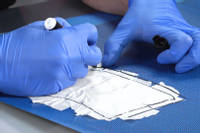
1. Temperen en snijden van de eerste laag prepreg
Om de vorm van de prepreg wapening bij benadering te bepalen, wordt afplaktape aangebracht op het oppervlak van de ene helft van de mal. De afplaktape wordt vervolgens verwijderd en op de prepreg wapening gepositioneerd. Omdat de mal nog niet nauwkeurig is, wordt deze in alle richtingen ongeveer 1 cm verlengd.
De voorgevormde prepreg wordt dan in de mal gelamineerd. Als het volledig op zijn plaats zit, wordt de overhangende wapening voorzichtig weggesneden zodat de wapening precies op maat is gesneden, gelijk met de rand van de spleet.
De restjes koolstofvezel worden dan teruggelegd op het steunpapier zodat het papier kan worden gesneden om een nauwkeurige mal te maken die precies aangeeft hoe de wapening in de mal wordt gedrapeerd. Deze sjabloon kan worden bewaard voor toekomstig gebruik.
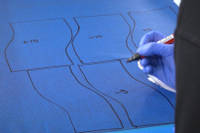
2. De gespreide ronden in model brengen
Bij het lamineren van wapening in een gespleten mal is het essentieel dat het grootste deel van de wapening doorloopt over de splijtlijn, zodat er geen zwak punt ontstaat bij deze verbinding. Zonder overlappende wapening zouden de twee helften van het onderdeel gewoon uit elkaar vallen!
Lagen wapening die doorlopen over de splitlijn worden overlappingen of 'laps' genoemd. Om te voorkomen dat er andere zwakke punten in het laminaat ontstaan, worden deze overlappen zelf gespreid door ze verschillende groottes te geven. In de tutorial worden de overlappende stukken wapening gesneden op 5mm, 10mm en 15mm breder dan de splitlijn.
Om te proberen een consistente wanddikte rond de buis te behouden, worden de overeenkomstige stukken wapening voor de andere helft van de buis smaller gesneden dan de splijtlijn. Echter, om enige overlapping van de overlappingen te creëren, wordt de wapening aan deze kortere kant in feite iets groter gesneden dan het zou zijn als de wapening elkaar zou ontmoeten in een perfecte stuikverbinding.
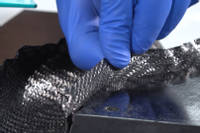
3. De 'gelapte' lagen toevoegen
De 'oversized' lagen worden achtereenvolgens in de tegenoverliggende zijde van de splitmal gelamineerd.
De eerste laag die wordt toegevoegd heeft het kleinste verlengstuk (5mm), ontworpen om de op maat gesneden eerste laag aan de andere kant van de mal enigszins te overlappen. Vervolgens worden de 10 mm en 15 mm verlenglagen toegevoegd.
Terugkerend naar de eerste kant van de gesplitste mal (waar de op maat gesneden laag al in zit) worden de twee kortere lagen toegevoegd aan deze helft, opnieuw in volgorde steeds korter om overeen te komen met de steeds langere overlappingen aan de verlengkant.
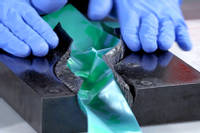
4. De buisvormige verpakkingsfolie toevoegen
De vacuümzakconfiguratie in deze tutorial is een interne buisvormige vacuümzak. Hierbij wordt een buisvormige zak door de middelste, gedeelde matrijsbuis geleid en vervolgens wordt deze buis verbonden met een externe 'envelop' zak aan de buitenkant van de matrijs.
Het type buisvormige verpakkingsfolie dat we gebruiken is onze VB155 zelfoprollende buisvormige verpakkingsfolie met zijvouw in een breedte van 100 mm.
Met de buisvormige verpakkingsfolie binnenin worden de twee helften van de mal voorzichtig naar elkaar toegebracht, waarbij erop wordt gelet dat de 'laps' correct zijn gepositioneerd en niet gevouwen of bekneld raken wanneer de mal wordt gesloten.
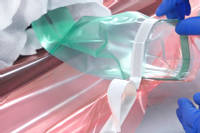
5. De vacuümzak voltooien
Om te beginnen wordt de buitenkant van de gespleten mal omwikkeld met BR180 ademend doek om een luchtstroom te creëren en te voorkomen dat de vacuümzak per ongeluk wordt doorboord door scherpe details op de mal.
Vervolgens wordt de hele mal omgeven door een grote 'envelop' zak van VB160 vacuümverpakkingsfolie. Het principe is dat de buisvormige vacuümzak een 'tunnel' creëert door het midden van de envelopzak. Wanneer het vacuüm wordt getrokken, wordt het van binnenuit de omhullingszak getrokken, waardoor de zak aan de buitenkant van de mal wordt gezogen en de buisvormige zak aan de binnenkant van de buis.
Om deze 'tunnel' door de zak te maken, wordt de buitenkant van de buisvormige zak aan de binnenkant van de enveloppezak geseald met wat vacuüm sealtape.
Vervolgens wordt de vacuümzak volledig vacuüm getrokken met onze EC.4 composiet vacuümpomp. Er wordt zorgvuldig gecontroleerd of de vacuümzak perfect is afgesloten, zonder lekken.
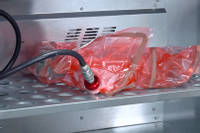
6. De prepreg uitharden in de oven
Het vacuüm verpakte onderdeel wordt vervolgens overgebracht naar een oven om uit te harden. Omdat we de XPREG XC110 out-of-autoclave prepreg gebruiken om dit onderdeel te maken, moet een specifieke uithardingscyclus worden gevolgd om de beste resultaten te krijgen. Zie de XC110 verwerkingsgids voor alle details over aanbevolen uithardingscycli en verwerking voor XPREG XC110.
DISCUSSIE (19)
Laat het ons weten als je vragen of opmerkingen hebt over deze videotutorial.
De milieu-impact van composieten is iets genuanceerder dan alleen te kijken naar de plastic verbruiksartikelen die in het productieproces worden gebruikt. Over het algemeen worden geavanceerde composieten nu gezien als zeer belangrijk voor de productie van lichtere, efficiëntere technologie, vooral in de transportsector. Als je een meter of twee verpakkingsfolie moet gebruiken om een kilo te besparen op het gewicht van een onderdeel van een vliegtuigdeur, dan zou de vermindering in brandstof die nodig is tijdens de levensduur van het onderdeel de milieu-impact van de folie en het fabricageproces dat wordt gebruikt om het onderdeel te maken, in het niet doen vallen. Geavanceerde composieten besparen nu al duizenden tonnen CO2 per jaar in passagiersvliegtuigen en andere toepassingen voor massatransport. Plastic folie die op een verantwoorde manier wordt verwijderd, veroorzaakt geen schade aan het milieu, maar het lichtgewicht onderdeel helpt de klimaatverandering tijdens zijn hele levensduur te verminderen.
LAAT EEN OPMERKING OF VRAAG ACHTER
PRODUCTEN GEBRUIKT IN DIT PROJECT
Hoewel dit niet per se een uitputtende lijst is, werden de volgende gereedschappen en materialen, geleverd door Easy Composites, in dit project gebruikt.
De hoeveelheid die hieronder wordt weergegeven, is de geschatte hoeveelheid die in het project wordt gebruikt, afgerond naar de dichtstbijzijnde beschikbare kitgrootte of hoeveelheid.
VERSTERKINGEN

GEREEDSCHAP & UITRUSTING


VERBRUIKSARTIKELEN VOOR VACUÜMZAKKEN




DISCUSSIE (19)
Laat het ons weten als je vragen of opmerkingen hebt over deze videotutorial.
De milieu-impact van composieten is iets genuanceerder dan alleen te kijken naar de plastic verbruiksartikelen die in het productieproces worden gebruikt. Over het algemeen worden geavanceerde composieten nu gezien als zeer belangrijk voor de productie van lichtere, efficiëntere technologie, vooral in de transportsector. Als je een meter of twee verpakkingsfolie moet gebruiken om een kilo te besparen op het gewicht van een onderdeel van een vliegtuigdeur, dan zou de vermindering in brandstof die nodig is tijdens de levensduur van het onderdeel de milieu-impact van de folie en het fabricageproces dat wordt gebruikt om het onderdeel te maken, in het niet doen vallen. Geavanceerde composieten besparen nu al duizenden tonnen CO2 per jaar in passagiersvliegtuigen en andere toepassingen voor massatransport. Plastic folie die op een verantwoorde manier wordt verwijderd, veroorzaakt geen schade aan het milieu, maar het lichtgewicht onderdeel helpt de klimaatverandering tijdens zijn hele levensduur te verminderen.
LAAT EEN OPMERKING OF VRAAG ACHTER
100% BEVEILIGD
BETALINGSMETHODEN
Easy Composites EU B.V., geregistreerd in Nederland 73601195. Alle inhoud auteursrechtelijk beschermd (C) Easy Composites Ltd, 2025. Alle rechten voorbehouden.